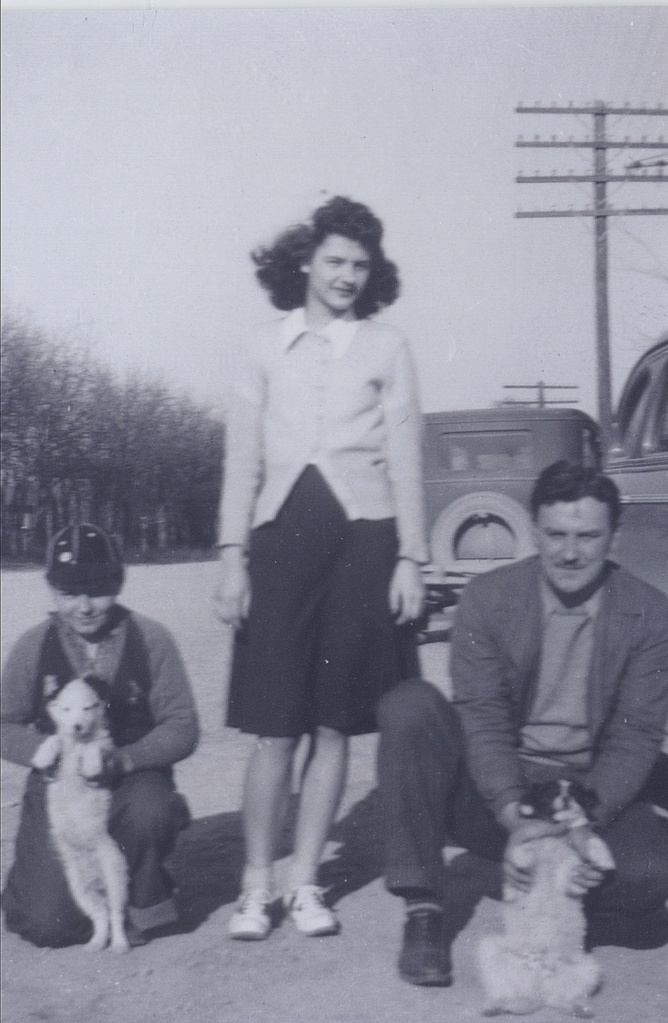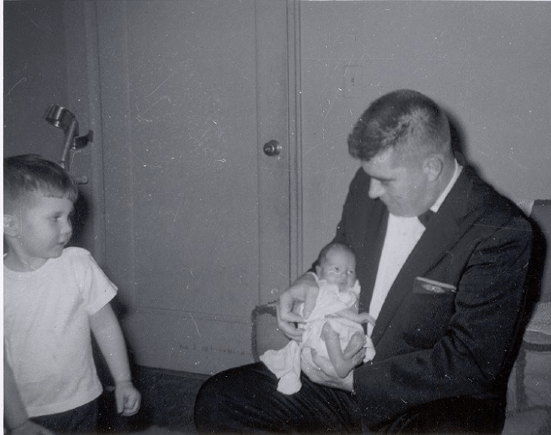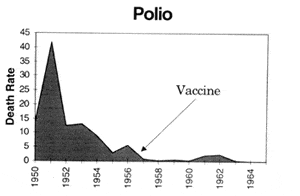
There’s always a member of your family who you truly love. Who you wish you could spend more time with, and who treated you with so much love in return that you just couldn’t get enough of them. That was my Aunt Gerry. When I was a small guy growing up in Lansing, Michigan, she lived about a mile away. We visited a lot. One of the reasons it was so fun to go to their house is that they had a built-in swimming pool, which was about the entire size of their back yard.
Summers were filled with swimming, playing pool in the basement, eating chili dogs, and just hanging out. Aunt Gerry was cool. She always had food for us, and tried to do whatever she could to make our visits special. She did what she could because she had polio. Most of what I remember as a kid was that she sat a lot, and had trouble getting up, pushed off of her one leg, and used her walking crutches whenever she had to move more than a few feet.
It wasn’t something that we thought was a bad thing. Aunt Gerry was just slow. Her niceness made up for her condition. I never wondered how she got polio – it’s just something that she had. One of the last times I saw her was at my dad’s wedding, when I was in my mid-20s. We spent some time talking, and I told her I wished I had more time to visit. I was living in New York City at the time, and it was just hard to visit everyone when I came to Michigan.
Here I am now 20 years after her death, and I’m still thinking about her. I’ll always remember her kind spirit, but now I wish I could have asked her about her polio. One of the issues of the disease back in the day was, “How did people come down with it?”
It is assumed that people came down with polio because of the poliovirus. This has been shown in research to be not so true. What most people are not aware of is that in over 95% of cases exposed to a virus, there are mild symptoms. Only about 1% of persons come down with actual neurological issues. But, is polio caused by a virus, really? Or is it caused by exposure to a poison?
Aunt Gerry and her husband Jim were stationed at Naval Station Norfolk in Virginia for approximately three years in the early 1950s. My cousin David was born there, and when he was approximately four years old, he remembers almost daily spraying for bugs on the Naval base. This is remarkable because he was so young, but it must have been one of those events that stays in your memory, like I remember when I was four or five and my sister was stuck in an eight-foot snow drift, so some events just stay with you.
David stated that it was around that time that she was diagnosed with polio, and David (now 62) remembers her arm crutches somewhere around the house from when we were little. This would put her diagnosis somewhere around the mid-1950s.
In the mid-1990s, the Elizabeth River Project and the Virginia Department of Environmental Quality identified DDT as one of 19 heavy metals, aromatic hydrocarbons, PCBs, herbicides and pesticides that had polluted the Norfolk region over a period of decades (on page 8 of the report). This shows a strong correlation of many years of spraying of DDT in NAS Norfolk and its relationship to disease in that region.
David doesn’t remember a time when his mom didn’t have her walking crutches. In fact, he shared a picture of himself and his little brother Mike with his dad, and in the background are his mom’s walking crutches (see above). This photo is a testament to the fact that they were a part of her daily life from the age of approximately 28 when she acquired the disease.
What Caused Aunt Gerry’s Polio?
A more traditional explanation would be that Aunt Gerry wasn’t “vaccinated” against the deadly poliovirus. She was exposed, and therefore contracted the disease. However, the truth is that she may not have been “exposed” to any viral agent, but to an environmental toxin.
 Back in the early 1950s, Dr. Morton Biskind was an environmental scientist who, in the midst of the propaganda concerning polio – and the massive amounts of DDT being sprayed in many areas of the US in an effort to kill disease-carrying mosquitoes – had the scientific composure to argue that the most obvious explanation to the polio epidemic (and other central nervous system diseases) are physiological and symptomatic manifestations to industry-sponsored spraying of the world’s populace with central nervous system poisons. Before DDT, aluminum and arsenic were sprayed on many of the nation’s fruit orchards across the country.
Back in the early 1950s, Dr. Morton Biskind was an environmental scientist who, in the midst of the propaganda concerning polio – and the massive amounts of DDT being sprayed in many areas of the US in an effort to kill disease-carrying mosquitoes – had the scientific composure to argue that the most obvious explanation to the polio epidemic (and other central nervous system diseases) are physiological and symptomatic manifestations to industry-sponsored spraying of the world’s populace with central nervous system poisons. Before DDT, aluminum and arsenic were sprayed on many of the nation’s fruit orchards across the country.
While most Americans are familiar with the work of environmental biologist Rachel Carson and her award-winning book, Silent Spring, they may only remember that DDT had devastating consequences on the environment, and especially the bald eagle. After that book, widely considered the first publication of the environmental movement, most people who read it never made any connection that the same destruction of animals, lakes, and insects also can impact humans.
Dr. Biskind explained:
“In 1945, against the advice of investigators who had studied the pharmacology of the compound and found it dangerous for all forms of life, DDT (dichloro-diphenyl-trichloroethane) was released in the United States and other countries for general use by the public as an insecticide.”
Immediately after WWII, the use of DDT as a mosquito control method went into high gear. With associations such as the American Mosquito Control Association, the Florida State Horticultural Society, and the Post-War Planning committee of the American Association all were looking to abate the mosquito “problem” that was seen around the nation.
Dr. Biskind also wrote:
“Since the last war there have been a number of curious changes in the incidence of certain ailments and the development of new syndromes never before observed. A most significant feature of this situation is that both man and all his domestic animals have simultaneously been affected. In man, the incidence of poliomyelitis has risen sharply.”
DDT Spraying and Outbreaks
So it is clear that there is a connection between DDT spraying and massive outbreaks in cities, community parks, pools, and other areas where consistent summer spraying for mosquitos was common. However, the problem is that parents, doctors, and even scientists were unable to even go down this path of the DDT/polio relationship. The reason? The consistent propaganda relating to the polio vaccine. Although many think that Salk trials “cured” polio, early experiments with monkeys proved disastrous, and initial trials with orphans in the first year also had many children die, and others became permanently disabled.
How does this affect Aunt Gerry? Based on the information presented above regarding DDT and its effects on polio, and the fact that every summer at NAS Norfolk, there was spraying for mosquitos, and based on the fact that Aunt Gerry was exposed to DDT spraying for at least one summer, it could be argued that her subsequent polio diagnosis and lifetime disability could be blamed not on a viral infection, but exposure to a poison sprayed over a wide swath of American for over two decades. Aunt Gerry, along with millions of Americans, believed they may have been infected, but this may be been a deflection from the industrial spraying that continues to poison Americans today through the use of herbicides, pesticides, fungicides, and the massive use of Roundup and Bt toxins on over 70% of crops that Americans eat.
It is time that we take a more serious look at the amount of poisons in our food, water, and atmosphere, and decide if neurological diseases at all levels are directly caused by (or highly associated with) these chemicals; in my opinion, caused, and still does.
DDT is Hazardous Waste
In 1986, the US Military Inspector General stated a scathing report on the status of hazardous materials and waste management by the DOD. The inspection team visited 39 sites based in the US and 33 abroad. Among the conclusions were: the military was not in full compliance with environmental laws and regulations, that its overall management of hazardous wastes and materials was ineffective, and that its conforming storage program (emphasizing storage vs. disposal) was out of control (page 4). In three years, the US Military generates over 2.2 million tons of hazardous waste products (1987-89).
Are there other concerns about the rise of polio in the 40s and 50s? One is provocation polio – which saw a spike in cases from both tonsillectomies and DPT injections, which allowed viruses to pass from the gut (in which they were harmless) to the blood stream, and into the central nervous system, where the damage started.
So, with my memory of my aunt still etched in my mind, and my work towards trying to find an answer to the “vaccinate everyone” mindset within the pharmaceutical industry – my response to her if she were to ask me today, “Why?”, I would say that watching you with grace and dignity live your life with a disability that you should not have been exposed to gives me the gentle push that I need to educate others that there are things they can to for their own health that will increase the odds of a long, healthier life, and I want to give them as much information as they need to make the best decisions for themselves and their children. This is our legacy.
Thanks, Aunt Gerry.
References
- Arnold, E. H., Ferguson, F. F., and Upholt, W. M. 1945. The experimental use of DDT sprays as mosquito larvieides. U. S. Pub. Health Serv. Reports., Sup. 186:66-79.
- Morton S. Biskind, MD. Public Health Aspects of the New Insecticides. American Journal of Digestive Diseases, New York, 1953, vol. 20, pg. 331.
- Oshinsky, DM. Polio. An American Story. 2003. Oxford University Press, New York.
- Stierli, H., Simmons, S. W., and Tarzwell, C. M. 1945. Operational procedures and equipment used in the practical application of DDT as a residual house spray. U. S. Pub. Health Reports., Sup. 186:49-65
- Weathersbee, A. A. 1945. Mosquito control at the Naval Base, Norfolk, Virginia N F Mosquito Extermin. Assoc. Proc. 32:96-99
- Mawdsley, SE. Polio provocation: Solving a mystery with the help of history. Lancet. 2014, 384(9940):300-01.
- Wyatt, HV. Provocation poliomyelitis: neglected clinical observations from 1914 to 1950. (537). Bull Hist. Med. 1981; 55: 543
- http://www.military.com/base-guide/naval-station-norfolk
- http://www.guamagentorange.info/yahoo_site_admin…
- http://www.elizabethriver.org/sites/default/…
- http://www.ageofautism.com/2014/04/pesticides-and-the-age-of-polio.html
- http://www.ncbi.nlm.nih.gov/pmc/articles/PMC1854857/
- http://www.cnn.com/2003/HEALTH/10/31/roosevelt.polio.reut/
- https://idsent.wordpress.com/2016/01/09/the-salk-polio-vaccine-tragedy/
- http://www.westonaprice.org/health-topics/…


